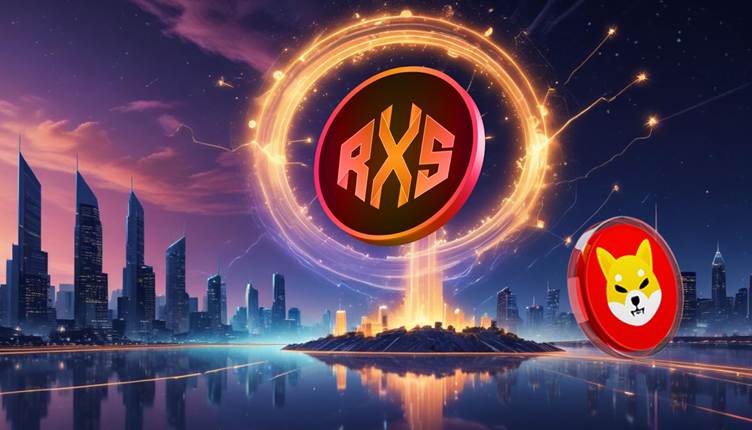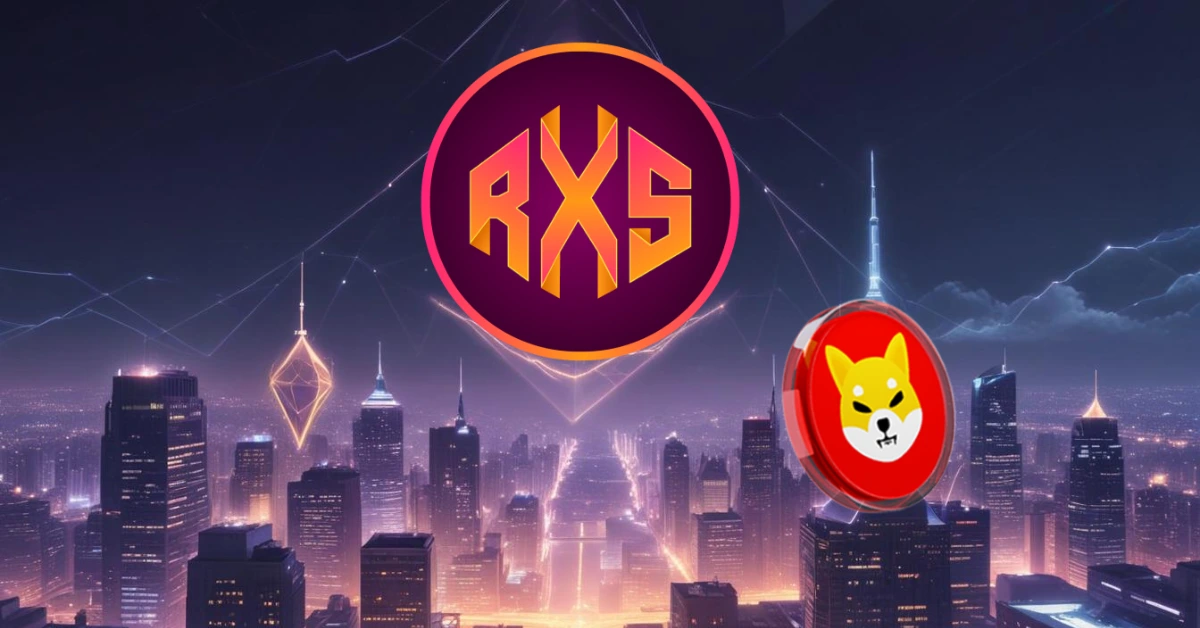 CaryptosHeadlines Media Has Launched Its Native Token CHT.
Airdrop Is Live For Everyone, Claim Instant 5000 CHT Tokens Worth Of $50 USDT.
Join the Airdrop at the official website,
CryptosHeadlinesToken.com
CaryptosHeadlines Media Has Launched Its Native Token CHT.
Airdrop Is Live For Everyone, Claim Instant 5000 CHT Tokens Worth Of $50 USDT.
Join the Airdrop at the official website,
CryptosHeadlinesToken.com
With the conventional banking system and the blockchain industry, Custodia Bank, along with Vantage Bank, facilitated the tokenization of U.S. dollar demand deposits on a public, permissionless blockchain. This innovative event that occurred on 25th March 2025 indicates a major shift in the financial sector by bringing in stablecoins that are fully regulated and issued against U.S. dollar bank deposits. Custodia Bank is set to launch the Avit stablecoin, which will enable the programmable and transparent payments of digital dollars utilizing public blockchains such as Ethereum, hence transforming payments and cross-border transactions.


A Landmark Transaction on the Ethereum Blockchain
Custodia Bank’s Collaboration With Vantage Bank Set the Pace for Cross Border Transactions on Public Blockchains. Vantage Bank’s collaboration with Custodia Bank resulted in the first issuance, transfer, and redemption of stablecoins on the permissionless blockchain. The two banks deployed Ethereum’s ERC-20 standard for token issuance and management of the Avit stablecoins, marking a major growth in the fusion of blockchain technology and traditional finance. In an official statement released, Vantage Bank provided the stablecoin reserves and Fedwire and ACH transfer services, completing the other seven steps that the transaction was separated into.


This particular customer was able to withdraw their Avit tokens from self-custody, conduct bankless B2B transactions, and subsequently exchange the tokens for dollar deposits. The entire operation was within the bounds of legal requirements, as both banks operated under the Bank Secrecy Act’s and anti-money laundering regulations, as well as OFAC’s guidelines.
Custodia Bank’s CEO Caitlin Long commented on the significance of this event in the context of mainstream finance: “We shattered the ground when it comes to the legal and regulatory aspects by demonstrating that U.S. banks can mutually tokenize demand deposits using a permissionless blockchain in compliance with the law.”
The Growth of Stablecoins and the Support from Regulators
The ability to tokenize bank deposits in dollars is a game changing development for stablecoins, which are a type of digital currency associated with conventional national currencies. The attempt to incorporate stablecoins on permissionless blockchains stems from the increasing interest in dollar-backed stablecoins, which is a burgeoning phenomenon in the crypto market.
Avit, Custodia’s stablecoin, is a fully reserved stablecoin that exists in the form of a tokenized demand deposit. This new class of digital currencies facilitates automatic transactions while incorporating the transparency of blockchain technology and the regulatory safeguards U.S. banks mandate.
When discussing how blockchain technology can be useful in the bankin industry, CEO of Vantage Bank Jeff Sinnott said, “This milestone illustrates how the combination of blockchain technology and stablecoins can transform the payment realm and is a banner event in retooling the financial industry. This transaction allows us to give banks the responsibility to facilitate modernization through cross border banking, and take advantage of the power of the dollar.”
What This Impacts Conventional Finance as well as the Blockchain System
The joint effort of Vantage Bank and Custodia Bank may be able to serve as a model for using blockchain-integrated technology within the governed financial institutions. The successful transaction of the said stablecoin serves as proof that stablecoins can be issued on permissionless blockchains compliant to regulatory standards, which makes it easier for traditional finance to adopt the use of blockchains.
The CEO of Custodia Bank Caitlin Long had much more to say concerning the project when she claimed, “I’ll tell you the impact is more on tradfi. While crypto took some sandbox, the monetary story is in what Custodia Bank did with Vantage Bank.”
This reminds us of the importance of legal compliance to blockchain technology and the positive impact traditional finance may have on the adoption of such technologies while remaining regulatory compliant.
The Future of Stablecoins and Blockchain in Banking
With an increase in the cryptocurrency market and the adoption of new technologies in finance, it is only a matter of time before banks try to explore the option of tokenizing traditional fiat deposits on a blockchain system. The success of the Custodia-Vantage Bank project will likely incentivize other financial institutions to increase the use of blockchain-enabled payments for securely and digitally regulated dollar payments.
With blockchain, banks are able to form a partnership to build a compliant digital payment system, emphasizing the need for regulation. As the U.S. Dollar is heavily relied on in global governance, this could usher a new era of international payments using stablecoins and blockchain technology.
Conclusion: Emerging International Fintech Landscape Around Blockchain and Stablecoins.
The adoption of traditional finance practices with advanced technologies received a boost with the issuance of the first-ever bank-issued stablecoin on a permissionless blockchain. While Custodia and Vantage Bank were pioneering this achievement, this historic transaction also serves to encourage other banks to consider converting fiat currency deposits to blockchain-enabled tokens. The regulatory compliance accomplished by both banks demonstrates that blockchain technology can be integrated into the existing financial systems of these countries without contravening laws.
Custodia Bank’s innovative undertakings can be critical in meeting the growing demand for regulated, dollar-pegged stablecoins, hence having a positive impact in shaping the landscape of digital payment systems and international transactions. A new chapter in the development of banking with stablecoins and blockchain technology has officially begun.
FAQs
-
Why is the cooperation between Custodia and Vantage Bank of such great importance?
This collaboration is important because it enables the first-ever tokenization of U.S. dollar bank deposits on the permissionless blockchain with the issuance and transfer of Avit stablecoins on Ethereum. It is a precursor of the development of the use of blockchain technology in the controlled financial industry.
-
What is Avit?
Avit is a stablecoin issued by Custodia Bank which is fully backed by U.S. dollar demand deposits. It runs on the Ethereum blockchain, which enables programmable and auditable payments using digital dollars.
-
How did the transaction work between Custodia and Vantage Bank?
The transaction was executed by minting, transferring, and redeeming Avit stablecoins on behalf of a customer using the Ethereum’s ERC-20 standard. It was fully compliant with U.S regulations including anti-money laundering and OFAC.
-
Why are stablecoins important for the future of finance?
Stablecoins are a digital form of traditional fiat money, and they provide additional benefits as programmable, transparent, and issued with lower transaction fees for cross-border payments, with stability because they are backed with assets such as the U.S. dollar.
Glossary of Key Terms
Stablecoin: A cryptocurrency that is pegged to a stable asset, such as the U.S. dollar, to minimize volatility.
Tokenization: Refers to the act of converting a tangible or intangible asset into a digital token on the blockchain.
Permissionless Blockchain: A blockchain that anyone can join without a central authority’s approval.
ERC-20: A protocol that defines a set of rules for creating and managing smart contracts on the Ethereum blockchain.
References
Follow us on Twitter and LinkedIn and join our Telegram channel to be instantly informed about breaking news!













